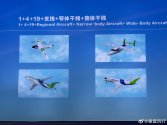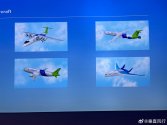You are using an out of date browser. It may not display this or other websites correctly.
You should upgrade or use an alternative browser.
You should upgrade or use an alternative browser.
Chinese Aviation Industry
- Thread starter FriedRiceNSpice
- Start date
Some visit into historical archives from @垂直风行 on Weibo:
The first ever MD-82 co-produced by China and the US had its maiden flight at Shanghai on July 2, 1987 and was delivered to the now-defunct China Northern Airlines in the same month. 35x MD-82s were produced in China in total, which the co-production ended in October 18, 1994.
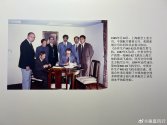
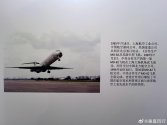
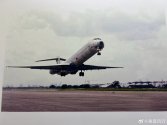
The wind tunnel testing model for the cancelled Y-10 from 1972. Borrowed from COMAC by a 3rd party (for exhibition).
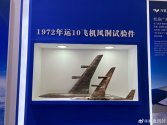
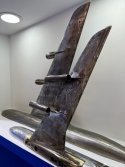
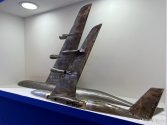
The first ever MD-82 co-produced by China and the US had its maiden flight at Shanghai on July 2, 1987 and was delivered to the now-defunct China Northern Airlines in the same month. 35x MD-82s were produced in China in total, which the co-production ended in October 18, 1994.



The wind tunnel testing model for the cancelled Y-10 from 1972. Borrowed from COMAC by a 3rd party (for exhibition).



Last edited:
As reported by a story that commemorates the late CAS fellow 曹春晓 (Cao Chunxiao) who was a renowned expert of Titanium alloy materials, Mr. Cao revealed, in a presentation of his on aircraft materials in 2017, that the amount [by weight presumably] of Titanium alloy materials used in Chinese military aircrafts has increased from 2% in J8, to 4% in J10, 15% in J11, 20% in J20 and 25% in J31. He also said Y20 has 10% titanium parts, on par with C17.
在2017年暑期院士专家系列科普讲坛上,曹春晓做了关于航空材料的演讲。他在演讲中讲到,我们国家的军用歼击机的钛用量也在不断提升。我们歼8用钛很少是2%,歼10用钛4%,歼11用到15%,歼20用到20%,歼31用到25%,也算比较多。我们的运20跟美国的C-17是相近的。美国的C-17叫环球霸王和我们的运20雅号叫鲲鹏,用钛量都是10%左右。其实两个等级都差不多。
I'm really curious about this 19 widebodies part.1+4+19+Regional Aircraft+Narrowbody Aircraft+Widebody Aircraft concept illustration by AVIC. Posted by @垂直风行 on Webo.
View attachment 121911
View attachment 121912
That seems a little crazy. You generally don't want to have too many moon shots at the same time. Concentrate on making your narrowbody aircraft really good and you win the market.
by78
General
AG600 aircraft has flutter and aerodynamic servo elasticity (ASE) compliance test flight.

On December 5, 2023, the large-scale fire-fighting/water rescue amphibious aircraft "Kunlong" AG600 successfully completed the internationally recognized Class I risk test flight test subjects - flutter and aerodynamic servo elasticity (ASE) at the Shaanxi Pucheng National Civil Aircraft Test Base. The compliance test flight marks a solid step towards airworthiness certification for the AG600 aircraft.
This flutter/ASE compliance test flight verified that the AG600 aircraft meets aeroelastic stability requirements and related special conditions, and confirmed that the aircraft will not experience flutter and other aeroelastic instability phenomena and servo elastic instability phenomena within the design envelope. , and has an appropriate stability margin, providing a basis for model certification.
During the implementation of this compliance test flight mission, the Shanghai Certification Center, the Aviation Industry Flight Test Center, TAC South China and relevant participating research units thoroughly implemented the spirit of General Secretary Xi Jinping's important instructions, worked together, carefully organized, and overcame difficulties. It ensured that the test flight mission was completed safely and efficiently.
Flutter and aero-servoelasticity (ASE) test flights are internationally recognized Category I risk test subjects. All new aircraft and major structural changes require flutter test flights. Aircraft with fly-by-wire flight control systems must undergo ASE test flights. Flutter and ASE explore the right boundary limit of the aircraft flight envelope. It is no exaggeration to say that it is dancing on the tip of a knife. Once a flutter and ASE test flight is carried out, all members must enter a state of preparation. Project personnel are often under tremendous pressure. The closer they are to the right boundary of the flight envelope, the more rigorous and accurate calculations and analysis they need to do, and they also need to deal with emergencies.
Flutter and ASE test flights require long-term accumulation of theoretical foundation and engineering experience from flight test principles, excitation methods, test flight technology to data processing methods. Only with solid technology, excellence, unity and collaboration, and persistence in innovation can we perfectly complete the arduous and outstanding test flight tasks of flutter and ASE.


